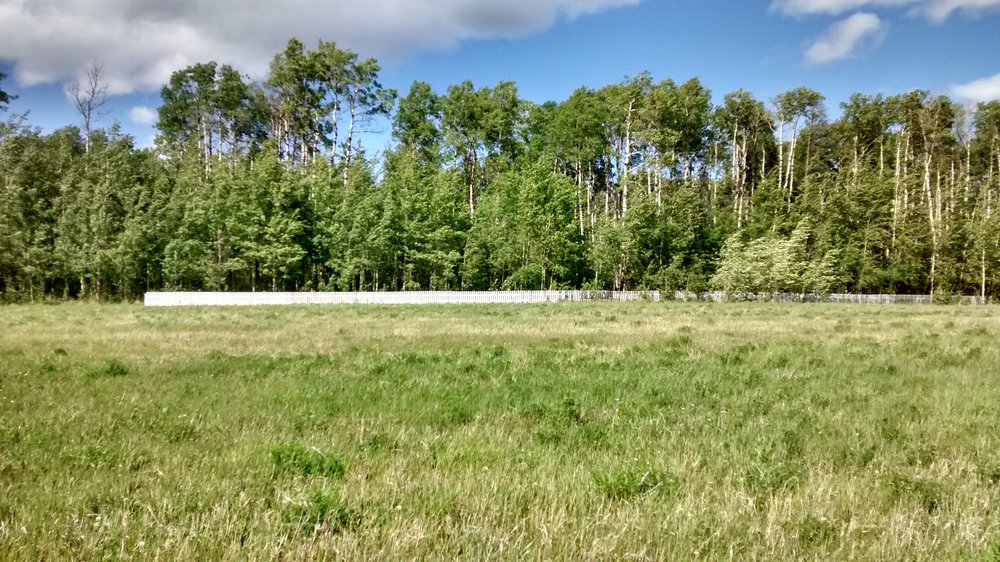
A detail of ‘Lifeline’. Photo courtesy of the artist.
This week, I was fortunate enough to speak with Demmitt artist Peter von Tiesenhausen to discuss what he calls his “most profound work”, Lifeline. For those who did not catch my previous article, Lifeline is an ongoing project that began 31 years ago with an eight-foot section of white picket fence that the artist adds to every year little by little. The result is a long, ever-lengthening fence that varies from pristine on one end to twisted, bent and eroded on the other. It is a physical manifestation of the steady march of time. For more on my interpretation of the work, check out part two of this series here.
Tiesenhausen had a homesteader’s upbringing, learning the trades of carpentry, forestry and farming from his father. As an artist with a lifelong relationship with the tools of the trade, such as the hammer, ax, saw and so on, Tiesenhausen came to appreciate the weathered look of these objects and how they recorded their use over time. It intrigued him that the wooden handle of an ax would callous the hands that weathered it in turn.
This led to an interest in entropy, or the alteration of objects over time, and eventually, Lifeline. Tiesenhausen says that “the fence” started fairly innocently: as an experiment to see how a wooden structure would alter over time. Significantly, Lifeline marked the end of Tiesenhausen’s old life of working in the mining industry and his rebirth as a full-time artist. In 1989, upon returning from his last job in Antarctica, Tiesenhausen got to work. “First thing I did was build that picket fence,” he says. “I didn’t realize it then, but it was really quite poignant. It was a grave for my previous life.”
The life of an artist is transient in nature, as they often travel for opportunities outside of their community, but the fence tied Tiesenhausen to the land in a way that allowed it to become a springboard for his life and career. Little did he know then that the section of fence he constructed out of curiosity would act as an anchor that would alter the course of his life. Adding to its length each year means that Tiesenhausen has to be on the land in the spring, when the earth is soft enough to pound posts. This annual commitment has had a grounding effect on the artist, which has led to a broader definition of home that includes a wider sense of community. As Tiesenhausen puts it, “If I’m going to be here, what am I going to do?” This simple question led to the construction of Demmitt Hall in the area, a stunning, sustainably built space that has hosted countless weddings, concerts and community events, as well as a timber-frame playground.
By his own admission, Lifeline has profoundly impacted the artist’s outlook on his own mortality. Built within view of his studio window, the slow degradation of the fence has kept the finite nature of life front of mind. As a result, Tiesenhausen is very discerning with how he spends this precious time, and only takes on projects that he finds fulfilling. In his words, “You can be interested, and value the time that you have. You can be youthful, healthy and everything and active and all that stuff, because you know that what’s coming down the pipe is that weathered board.” Lifeline has not only motivated the artist himself, but its meaning has the capacity to inspire those who encounter it to live more consciously and generously with the time we have left.
Do you have an artistic endeavour you would like to promote? Is there a topic you would like me to discuss? I would love to hear from you! Please email me at programs@dcartgallery.ca.

Peter von Tiesenhausen’s ‘Lifeline’. Photo courtesy of the artist.




